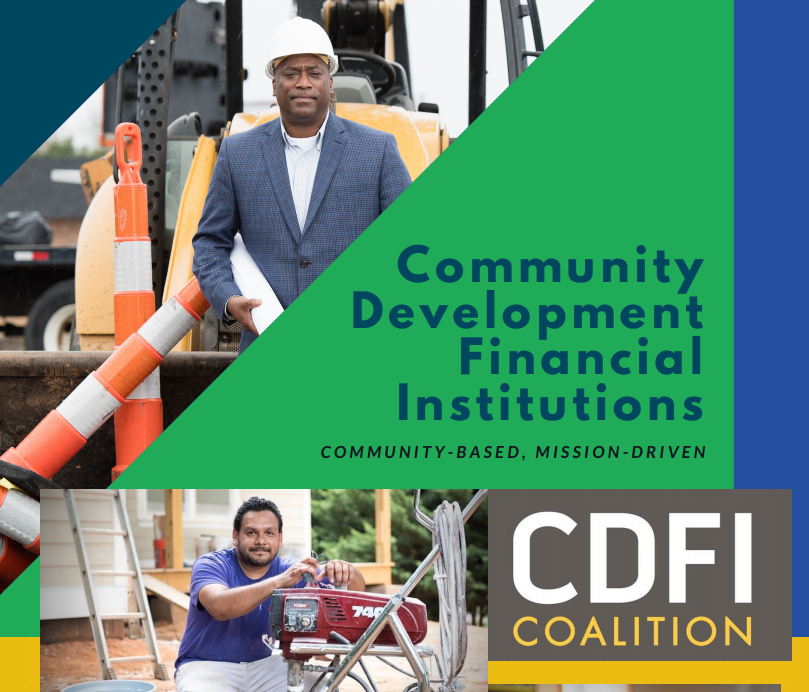CONTACT: Ayrianne Parks, ayrianne@rapoza.org, 202-579-7445
Showcases Investing and Revitalizing Underserved Communities, Populations Nationwide
Washington, DC (March 13, 2019) —The CDFI Coalition, representing the nation’s Community Development Financial Institutions (CDFIs), released a new report at a gathering of lawmakers, industry leaders and stakeholders today in Washington, DC. The report showcases 67 CDFIs’ work in revitalizing rural and urban areas across the country and their success in creating economic opportunity, jobs, and services.
This is the second report of its kind from the CDFI Coalition–the first was released in 2014, which marked the 20th anniversary of the first CDFI Coalition Institute and the enactment of legislation establishing the CDFI Fund.
“The CDFI Coalition was created to provide a vehicle for national advocacy on behalf of CDFIs. The Coalition leaders drafted a policy paper that described key issues CDFIs face and identified ways the federal government could support CDFIs’ work in low-income neighborhoods,” said Coalition spokesperson Bob Rapoza.

In July of 1993, a legislative proposal was sent to Congress by President Bill Clinton that was based on the CDFI Coalition’s policy recommendations. The legislation called for the creation of a federal agency, the Community Development Financial Institutions Fund, with a mission to increase the number and capacity of CDFIs operating in distressed communities across the nation. The CDFI Coalition mobilized a grassroots campaign spanning all 50 states to urge the passage of the legislation. In a strong display of bipartisan support, both houses of Congress voted overwhelmingly in favor of creating the CDFI Fund. On September 23, 1994, President Clinton signed the bill into law in front of the leaders of the CDFI Coalition and more than 300 CDFI practitioners and borrowers.
CDFIs are increasingly investing in some of the poorest communities in America where poverty is more than 30 percent or median incomes are less than 60 percent of the area median. Further compounding issues of poverty, these areas typically lack access to affordable, financial services. Investment by CDFIs helps reinvigorate these populations that have been left outside the economic mainstream.
The Coalition has noted the continuous and increasing need for financing for low-income communities. This need is evidenced by the surge in applicant demand in the Fiscal Year (FY) 2018 CDFI Program round. According to the CDFI Fund, organizations submitted some 700 total applications, requesting a combined $505 million for Financial Assistance and Technical Assistance awards, Healthy Food Financing Initiative awards, Persistent Poverty County awards and Disability Funds Financial Assistance awards. In addition, 124 CDFIs applied for $218 million for the BEA program. In the FY 2018 round of CDFI Program awards, 28 percent of the award recipients primarily served rural target markets that had high rates of poverty and unemployment.
“While the President’s FY 2020 budget yet again proposes the elimination of funding for this important financial tool for America’s most distressed rural and urban communities, the CDFI Coalition will continue its work to educate decision-makers about the demand for CDFI Fund programs and resources. The demand makes clear that this program is essential to meet the capital and economic development needs of low-income communities and people served by CDFIs nationwide,” added Rapoza.
Information on CDFI activity can be found by state on the CDFI Coalition’s website.
About the CDFI Coalition
As the unified, national voice of Community Development Financial Institutions, The CDFI Coalition’s mission is to encourage fair access to financial resources for America’s underserved people and communities. The Coalition of Community Development Financial Institutions—more commonly known today as the CDFI Coalition—was formed in 1992 by a number of nonprofit organizations and activists concerned about the persistent and pervasive lack of financing capital available in distressed, urban neighborhoods and poor, rural communities.
For more information, visit www.cdfi.org.
